As the War in Afghanistan passes the 10-year mark, the effect of the American withdrawal is already being felt among civilian aid workers, raising anxieties that Afghanistan will be abandoned and that gains will be quickly reversed. Even President Hamid Karzai asked nations at a conference in Germany recently to continue aid to his country for another decade. The United States, which provides two-thirds of all development assistance in Afghanistan, slashed its $4 billion aid budget to $2 billion in the 2011 fiscal year. The budget for 2012 may be cut further. In this post we continue our monthly visit to the country of Afghanistan, its residents and our troops. -- Paula Nelson (47 photos total)

An Afghan woman, holding her baby, walks through a busy street in Kabul, Dec. 5, 2011. A major international conference on December 5 sought ways forward for Afghanistan after the withdrawal of NATO combat troops in 2014.
The boycott of two crucial players,Pakistan and the Taliban, dampened hopes of success. The one-day gathering brought around 100 national delegations and aid organizations to the former German capital Bonn. (Shah Marai/AFP/Getty Images)
The boycott of two crucial players,Pakistan and the Taliban, dampened hopes of success. The one-day gathering brought around 100 national delegations and aid organizations to the former German capital Bonn. (Shah Marai/AFP/Getty Images)

Afghan pedestrians walk through a busy street in Kabul, Dec. 5, 2011. Afghanis' future post withdrawal of NATO combat troops in 2014 is at issue. (Shah Marai/AFP/Getty Images)

Bibi Sahiba prepares fire wood for her stove in Kabul, Dec. 2, 2011. Kabul's residents had called on delegates to the International talks on Afghanistan in Bonn to put their needs on the agenda, saying the government is not doing enough to alleviate poverty and hunger in the Afghan capital. (Omar Sobhani/Reuters)

Afghan children run holding jerrycans to collect water or fuel, in Kabul, Nov. 30, 2011. Despite massive injections of foreign aid since the fall of the Taliban in 2001, Afghanistan remains desperately poor. (Shah Marai/AFP/Getty Images)

An Afghan Koochi (nomad) boy at a mud hut in the outskirts of Mazar-i Sharif, capital of Balkh province, Dec. 4, 2011. (Qais Usyan/AFP/Getty Images)

An Afghan street barber shaves the head of a customer in the city of Mazar-i-Sharif, Dec. 1, 2011. (Qais Usyan/AFP/Getty Images)

Afghan doctor Nafisa, examines a newborn in an incubator at the Malalai Maternity Hospital in Kabul. Afghans are living longer, fewer infants are dying and more women are surviving childbirth because health care has dramatically improved around the country in the past decade, according to a national survey. (Musadeq Sadeq/Associated Press)

Afghan doctors register newborns babies at the Malalai Maternity Hospital in Kabul, Afghanistan, Nov. 29, 2011. (Musadeq Sadeq/Associated Press)
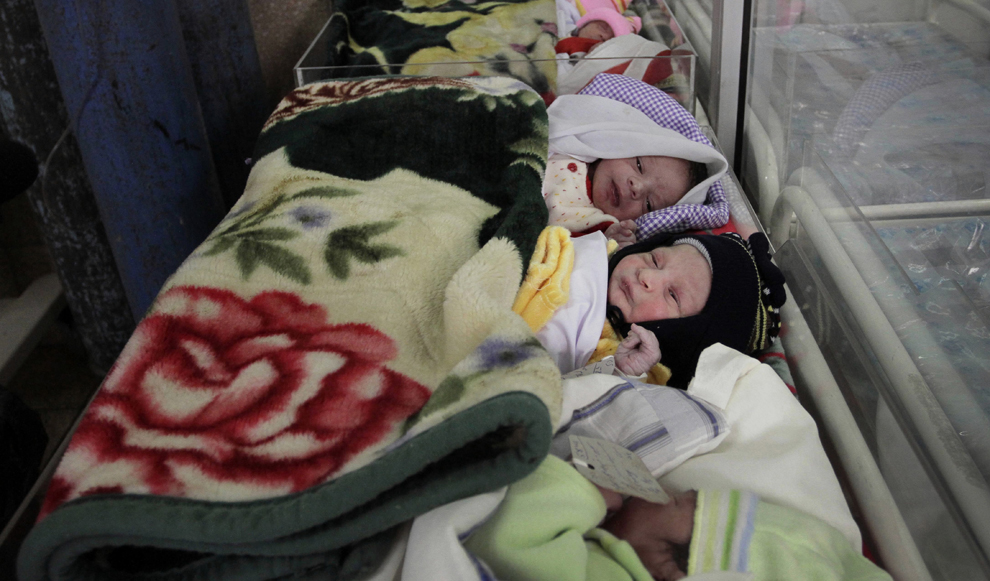
Afghan newborns at the Malalai Maternity Hospital in Kabul, Afghanistan, Nov. 29, 2011. (Musadeq Sadeq/Associated Press)
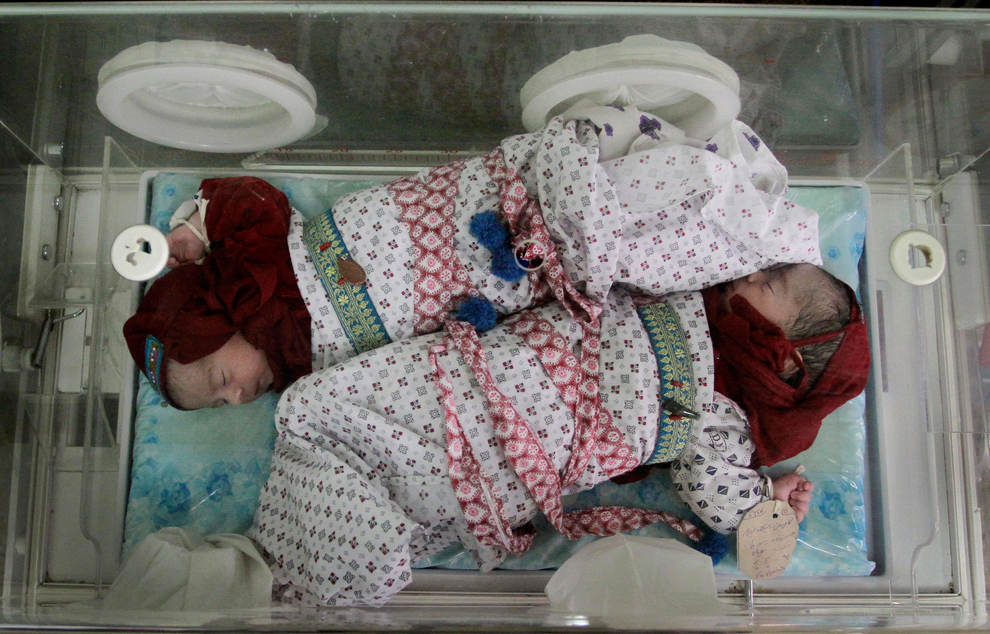
Newborn twins rest in an incubator at the Malalai Maternity Hospital in Kabul, Nov. 29, 2011. (Musadeq Sadeq/Associated Press)
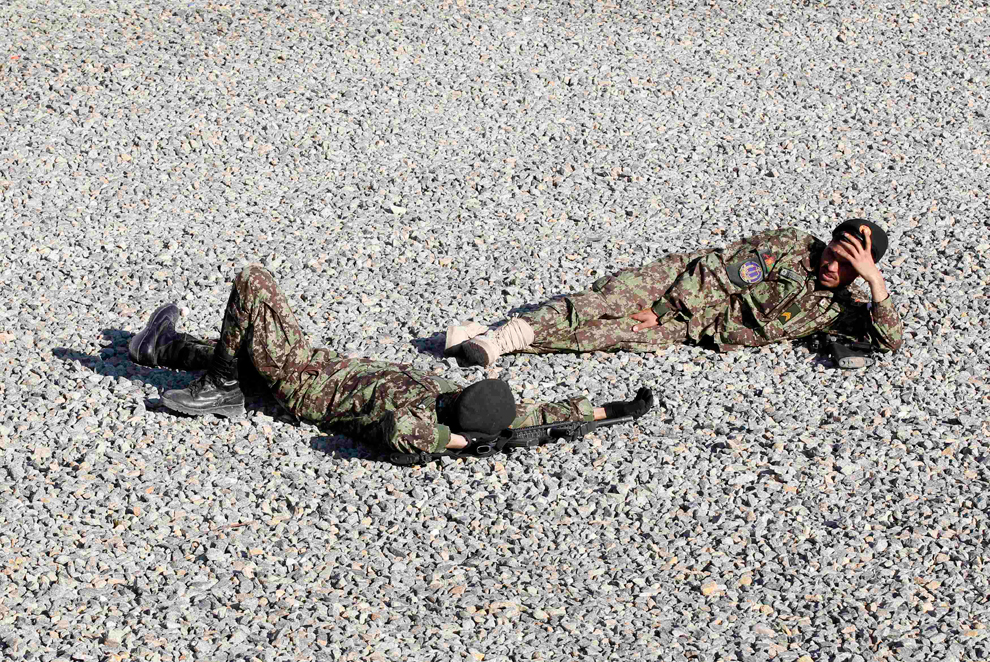
Afghan National Army soldiers chat as they take a break during a patrol in Pul-e Alam, a town in Logar province, eastern Afghanistan Nov. 28, 2011. (Umit Bektas/Reuters)
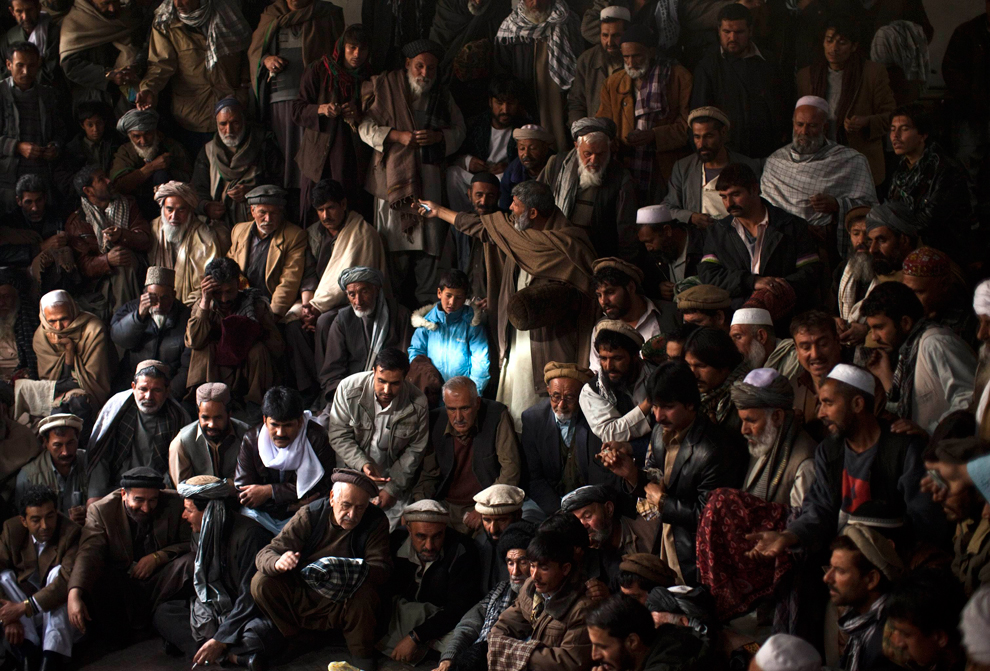
People watch a quail fighting competition in Kabul, Nov. 24, 2011. Quail fighting is a popular hobby and a gambling game in Afghanistan. (Ahmad Masood/Reuters)
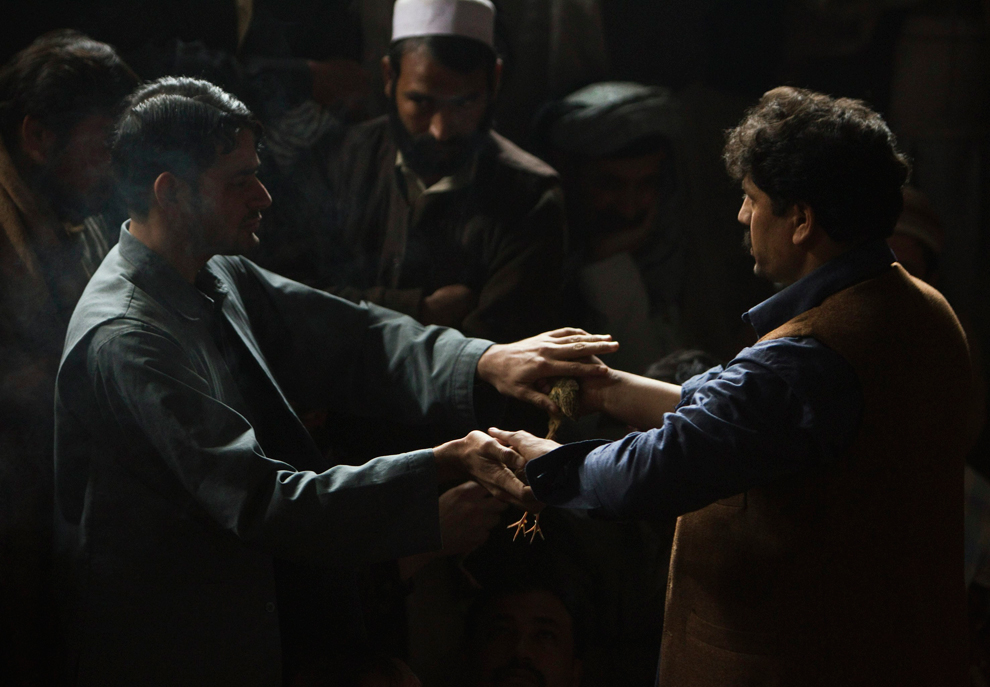
Men check each other's quails before a quail fighting competition in Kabul, Nov. 24, 2011. (Ahmad Masood/Reuters)
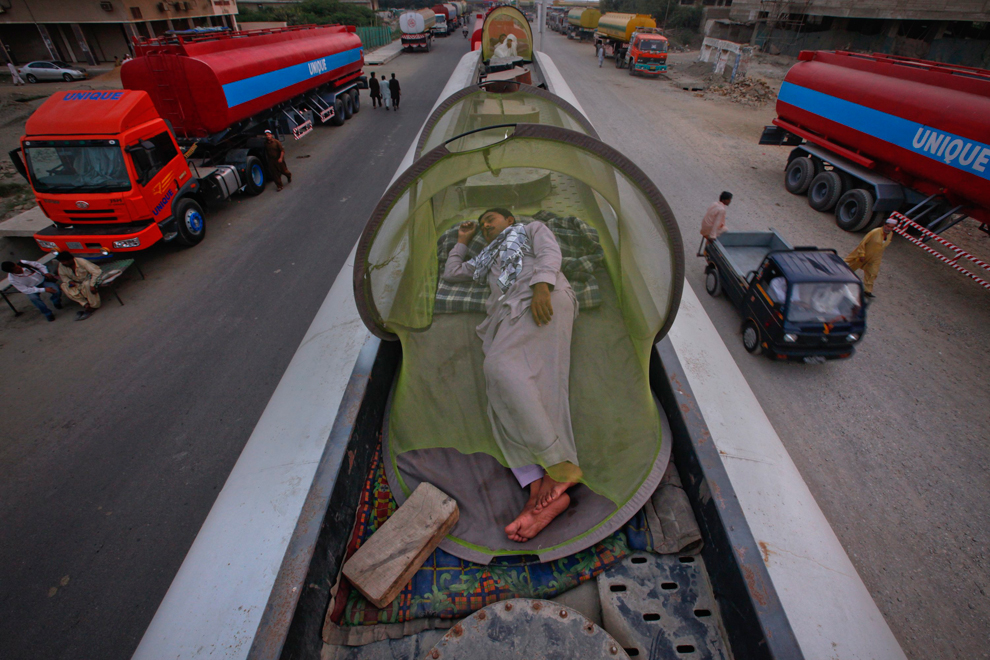
Drivers, some who carried fuel for NATO forces in Afghanistan, sleep on top of their trucks at a fuel terminal in Karachi Nov. 26, 2011. (Athar Hussain/Reuters)

An Afghan laborer works in a firewood yard at a market in Mazar-i Sharif, north of Afghanistan Nov. 28, 2011. Trying to recover from 30 years of conflict that destroyed institutions and infrastructure, Afghanistan remains one of the poorest countries in the world. Polls show that at a local level, Afghans are less concerned about poor security than they are about jobs, electricity and roads. (Qais Usyan/AFP/Getty Images)
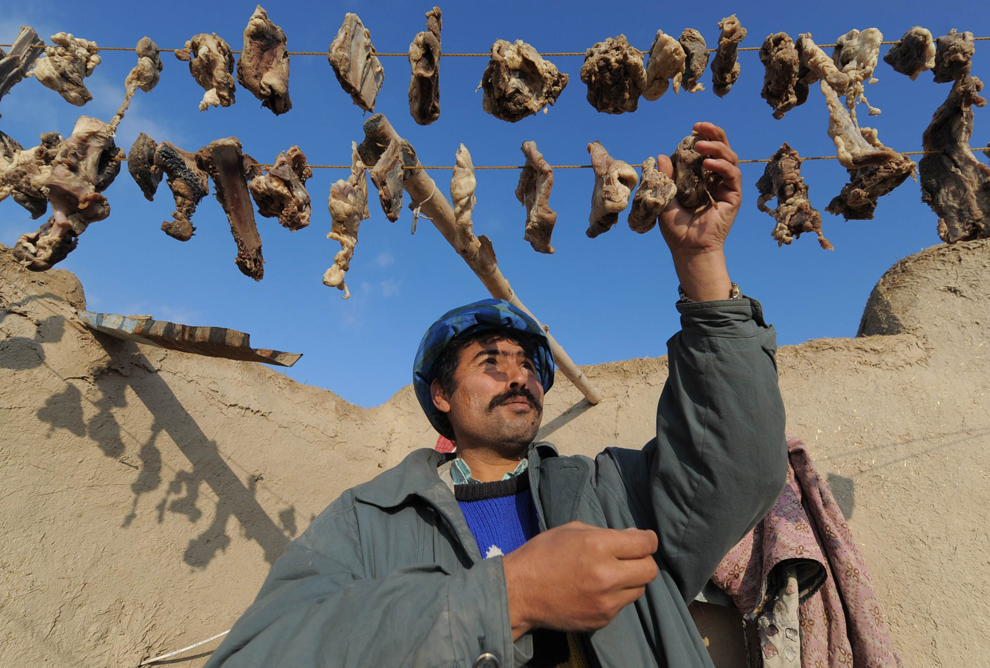
An Afghan Koochi (or nomad) checks meat hung to dry in the outskirts of Mazar-i Sharif, capital of Balkh province, Dec. 4, 2011. (Qais Usyan/AFP/Getty Images)
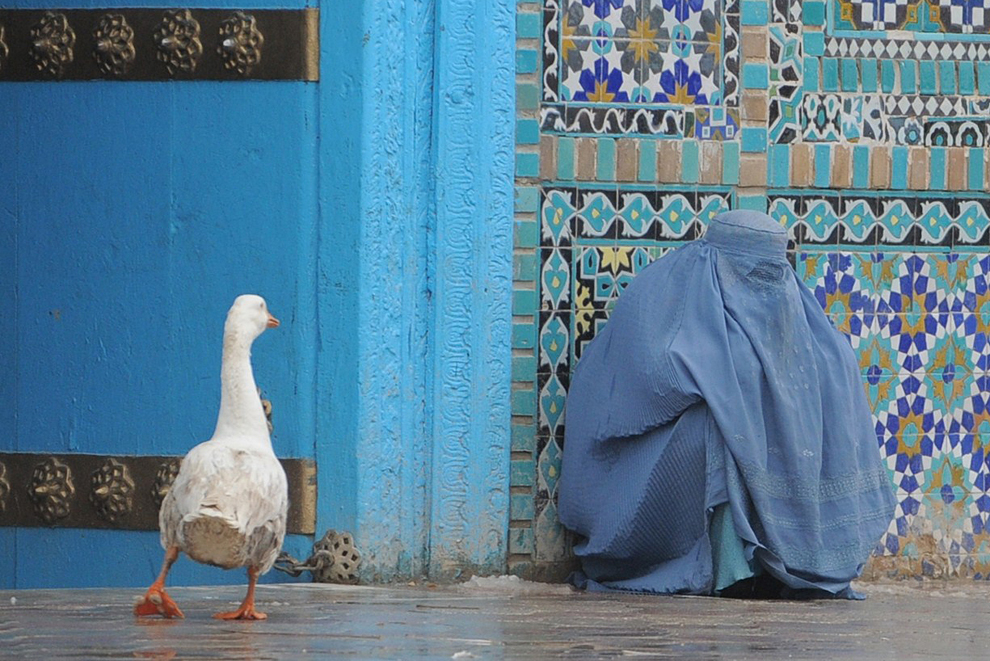
An Afghan woman begs next to Hazrat-e Ali shrine in Mazar-i Sharif on Nov. 26, 2011. Despite massive injections of foreign aid since the fall of the Taliban in 2001, Afghanistan remains desperately poor with one of the lowest standards of living in the world. (Qais Usyan/AFP/Getty Images)
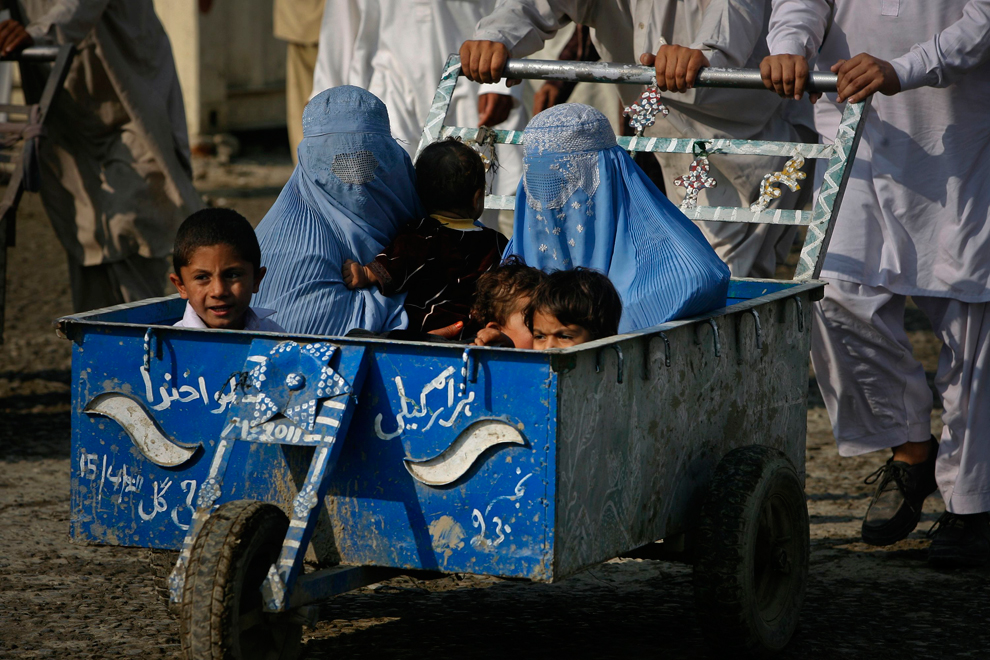
Men use a trolley to push their family members towards the Pakistan-Afghanistan border crossing in Torkham, Nov. 28, 2011. (Khuram Parvez/Reuters)

Internally displaced Afghan refugee girls and boys look out from a window of a home in Kabul, Afghanistan, Nov, 28, 2011. (Ahmad Jamshid/Associated Press)
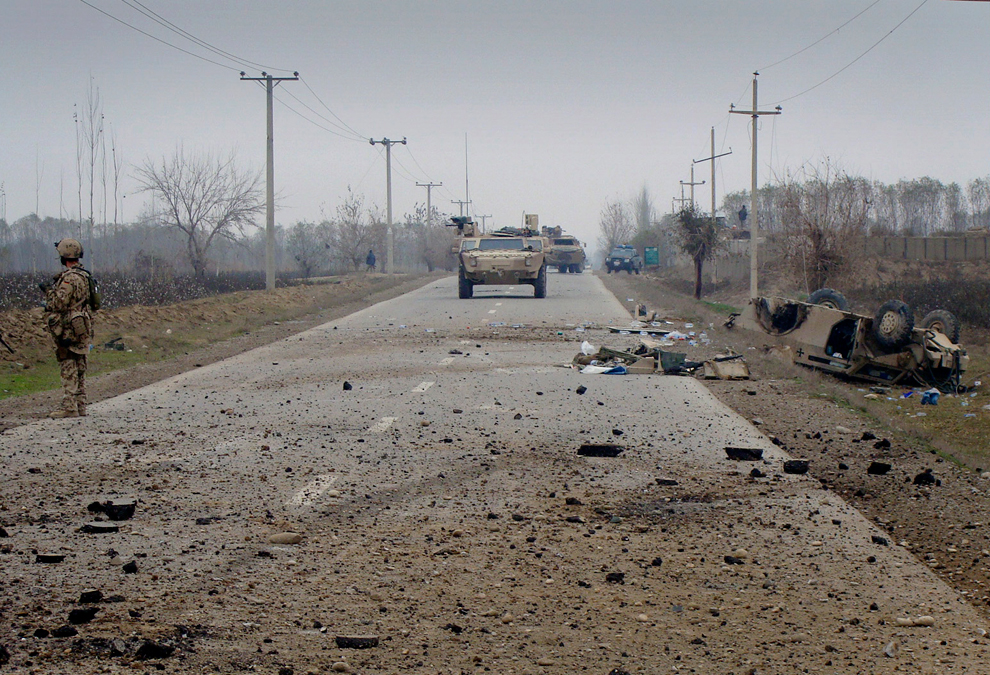
A German soldier with the NATO- led International Security Assistance Force (ISAF) stands guard at the scene where a German military armored vehicle was hit by road side bomb in Baghlan north of Kabul, Nov. 29, 2011. Two German soldiers were wounded after their vehicle was hit. (Javid Basharat/Associated Press)
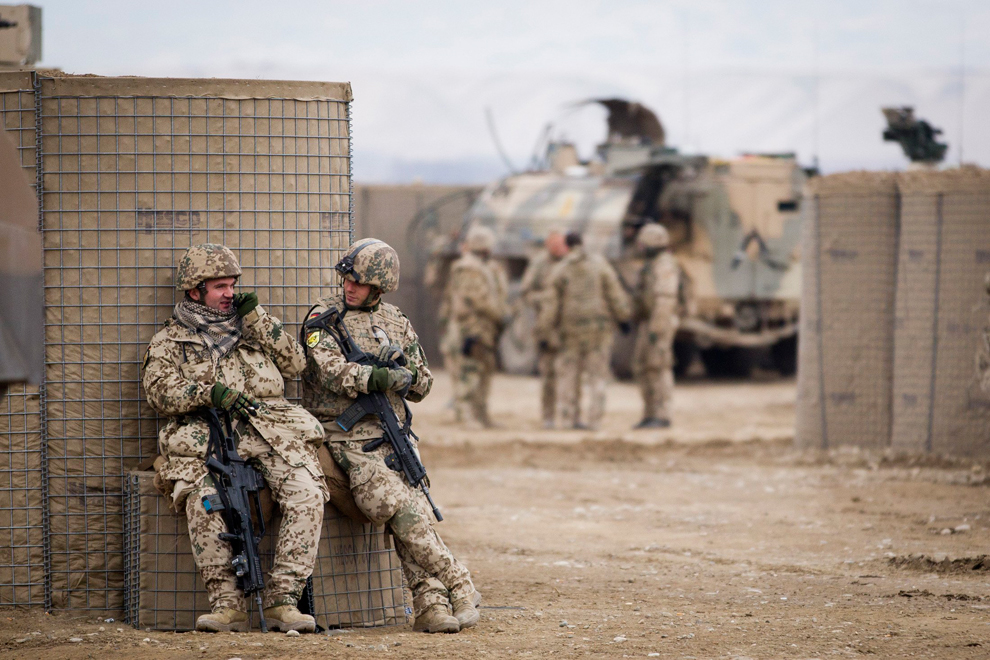
Soldiers of the German ISAF force guard the entrance of the combat outpost, Unicorn, near the city of Baglan, Dec. 4, 2011. (Thomas Peter/Reuters)
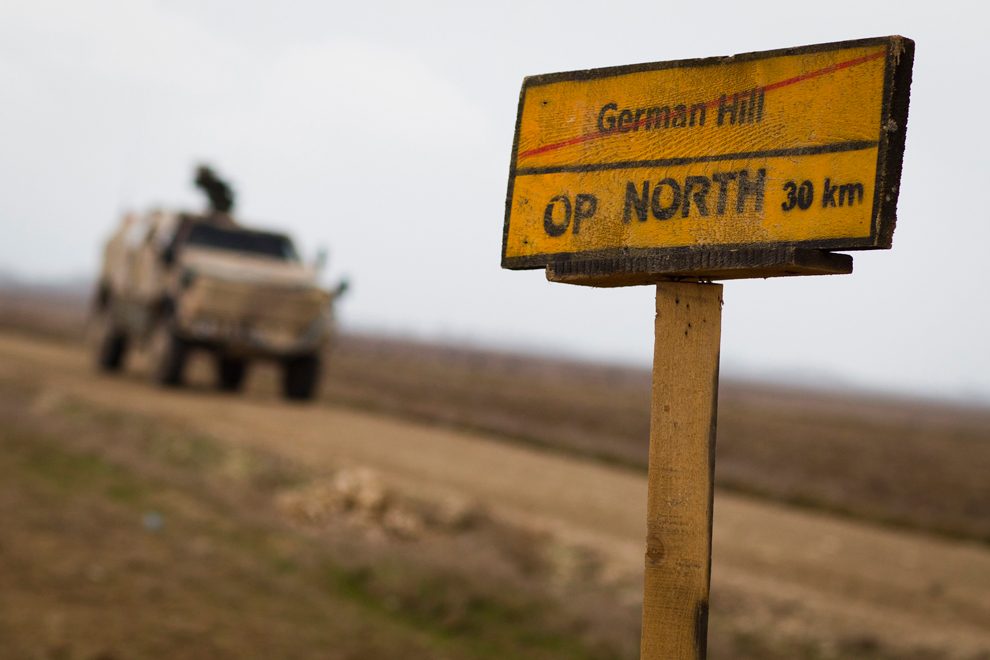
A Dingo armoured vehicle of the German ISAF force approaches a signpost at the entrance of combat outpost Unicorn near the city of Baglan, Dec. 4, 2011. (Thomas Peter/Reuters)
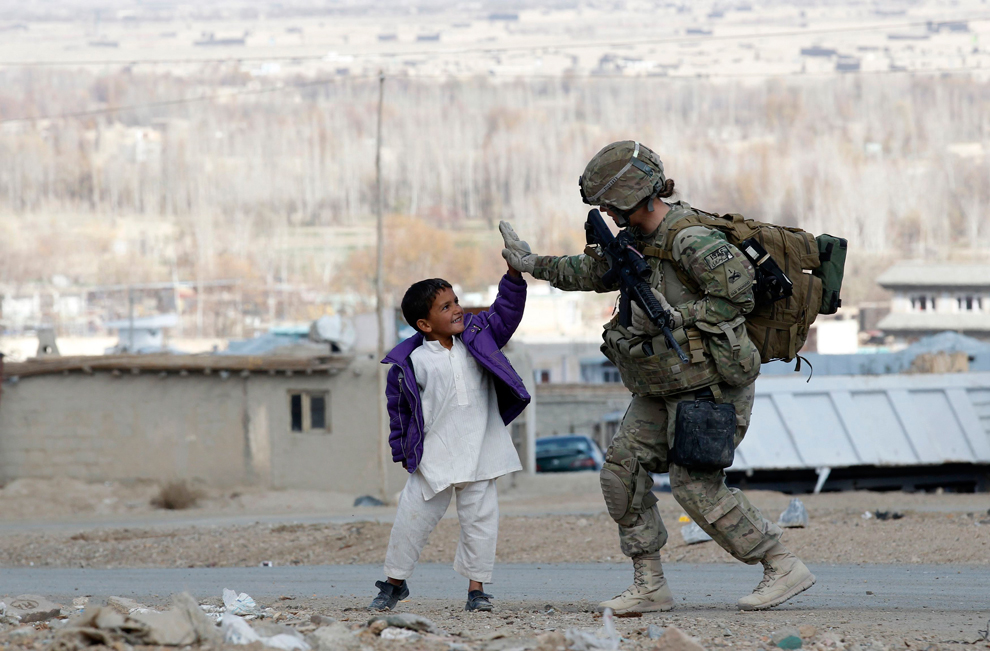
A U.S. Army soldier exchanges a high five with an Afghan boy during a patrol in Pul-e Alam, a town in Logar province, eastern Afghanistan, Nov. 28, 2011. (Umit Bektas/Reuters)
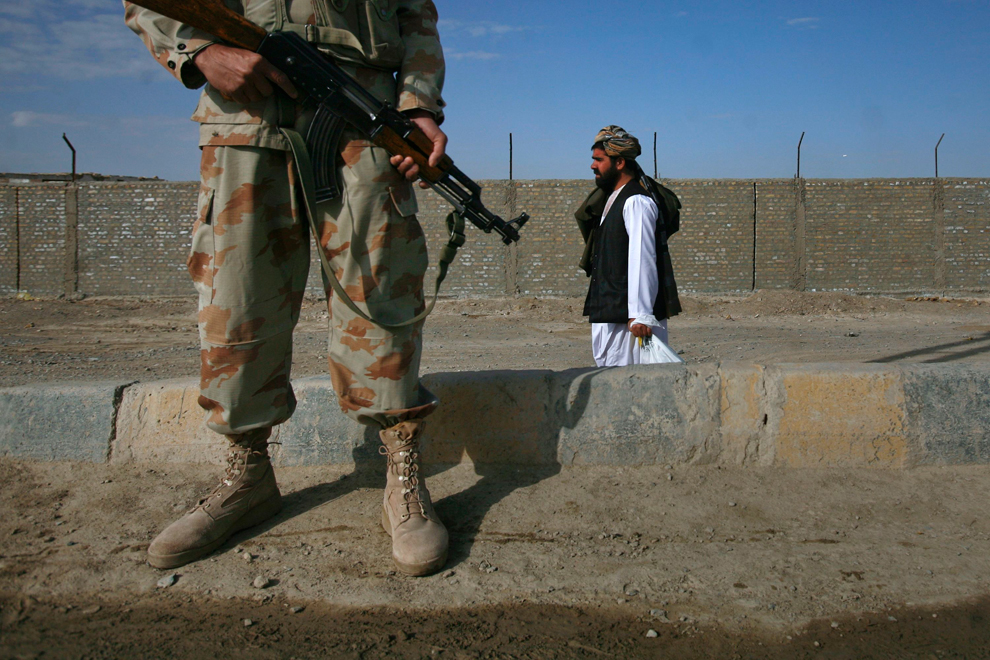
A man walks past an armed paramilitary soldier guarding the Pakistan-Afghanistan border crossing in Chaman, Nov. 28, 2011. (Naseer Ahmed/Reuters)
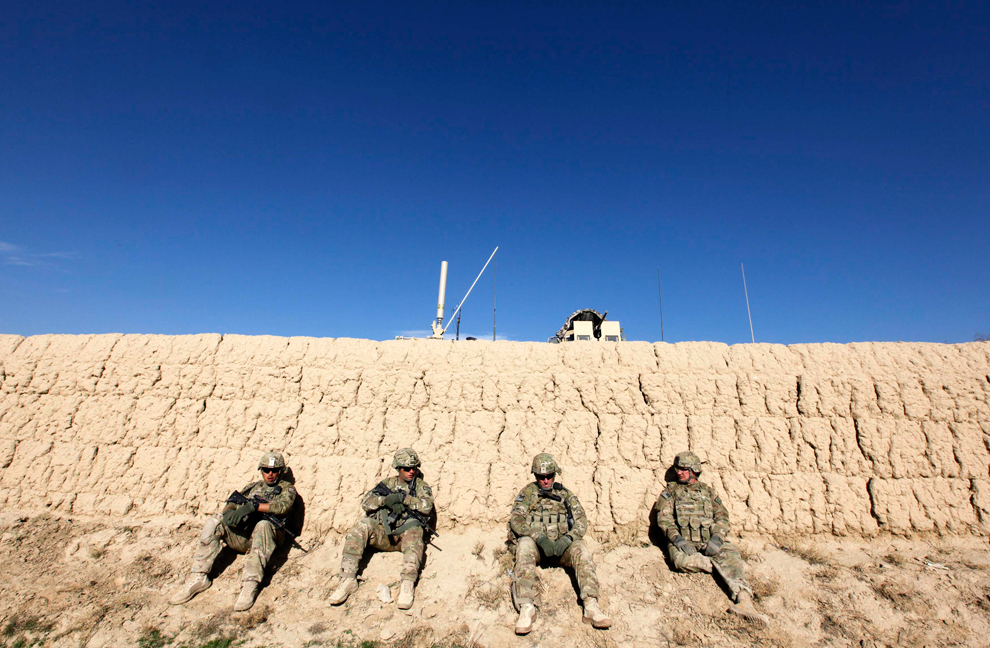
U.S. Army soldiers sit behind a wall, as others search for explosives, after an IED blast damaged one of their armored vehicles during road clearance patrol in Logar province, Nov. 23, 2011. (Umit Bektas/Reuters)
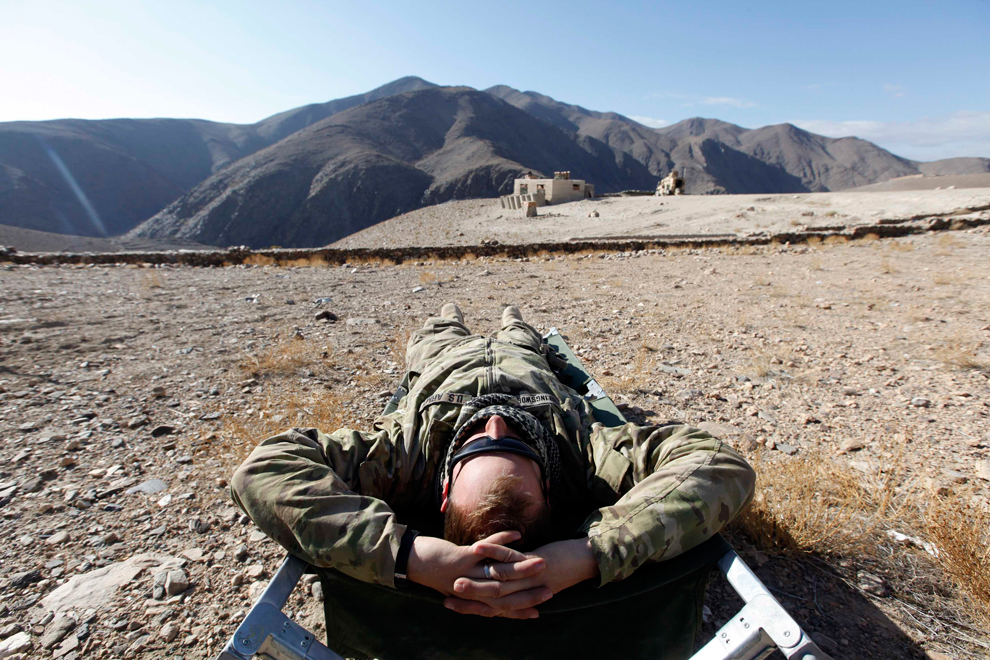
U.S. Sergeant Taylor Hollingsworth rests during a patrol as part of their overall security and disruption insurgency mission in Wardak province, eastern Afghanistan, Nov. 17, 2011. (Umit Bektas/Reuters)
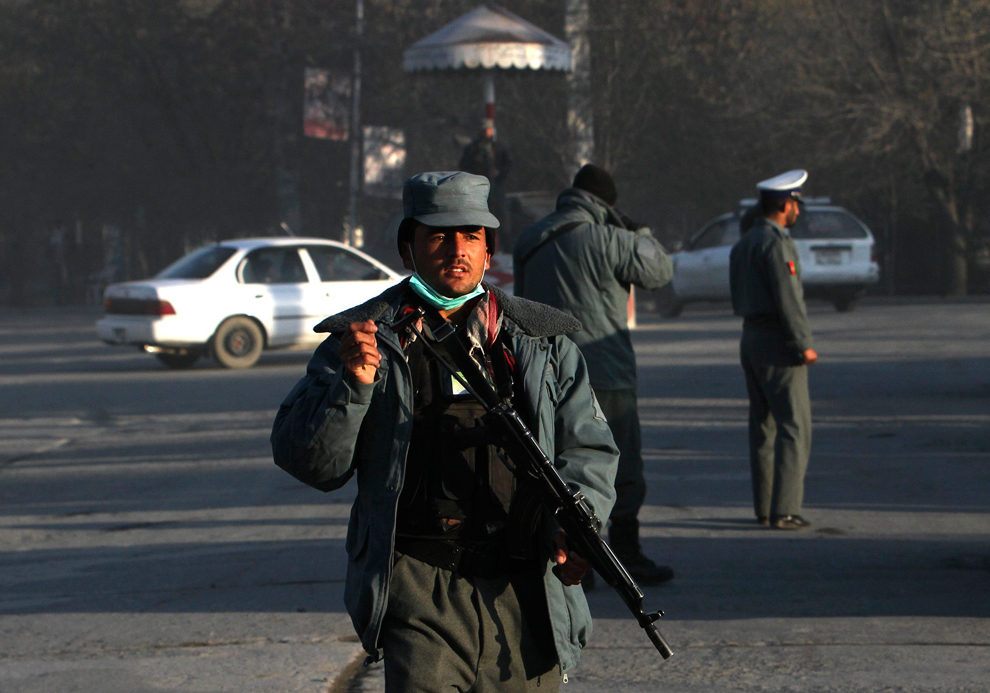
An Afghan policeman keeps watch at a vehicle checkpoint on the first day of the Loya Jirga, or the traditional assembly, in Kabul, November 16, 2011. About 2,000 Afghan community and political leaders gathered in Kabul under tight security for four days of deliberations on the country's most pressing issues, including ties with main ally, the United States. (Omar Sobhani/Reuters)
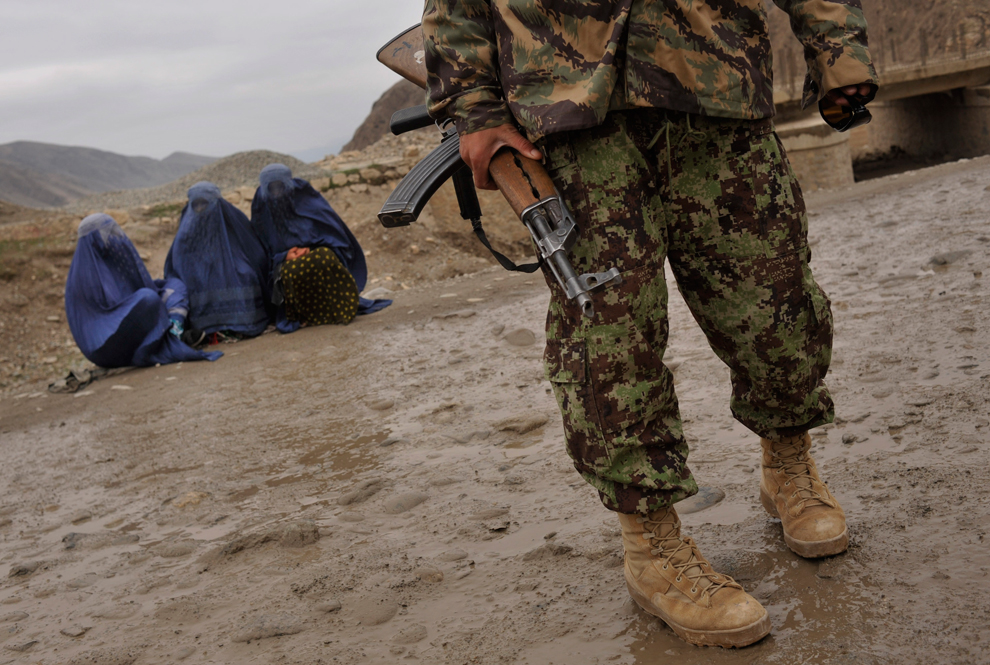
An Afghan National Army (ANA) soldier stands guard in front of street beggars near Pol-e-Khumri, Baghlan province, northern Afghanistan, Nov. 15, 2011. The province's only ANA battalion operates with the assistance of the Ohio National Guard and the Hungarian Army. (Bela Szandelszky/Associated Press)
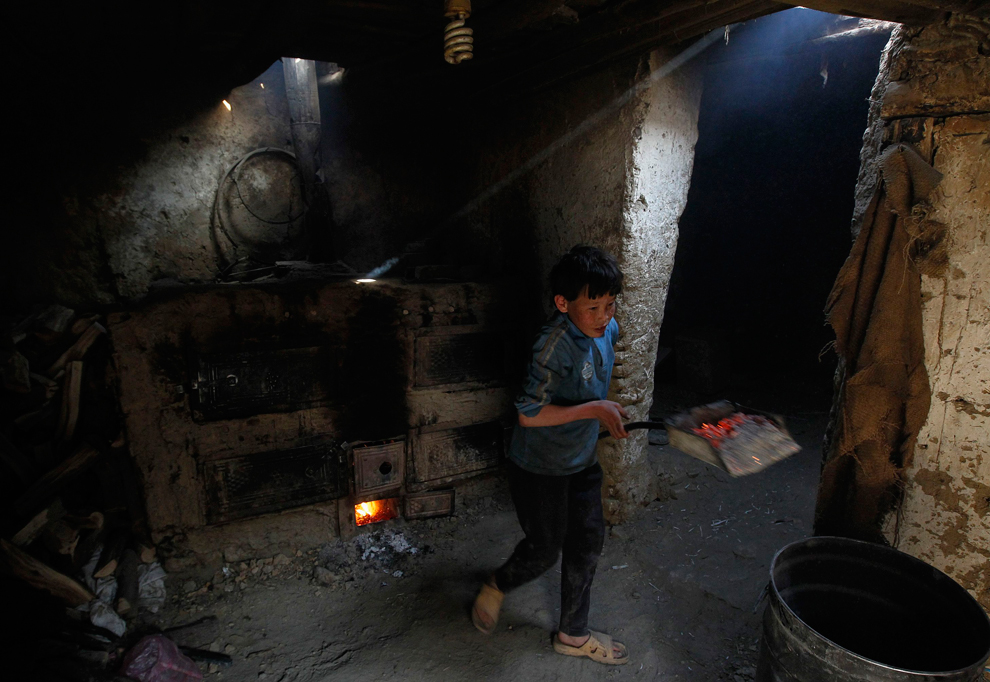
An Afghan boy works at a small confectionery factory in Kabul, Nov. 20, 2011. (Omar Sobhani/Reuters)
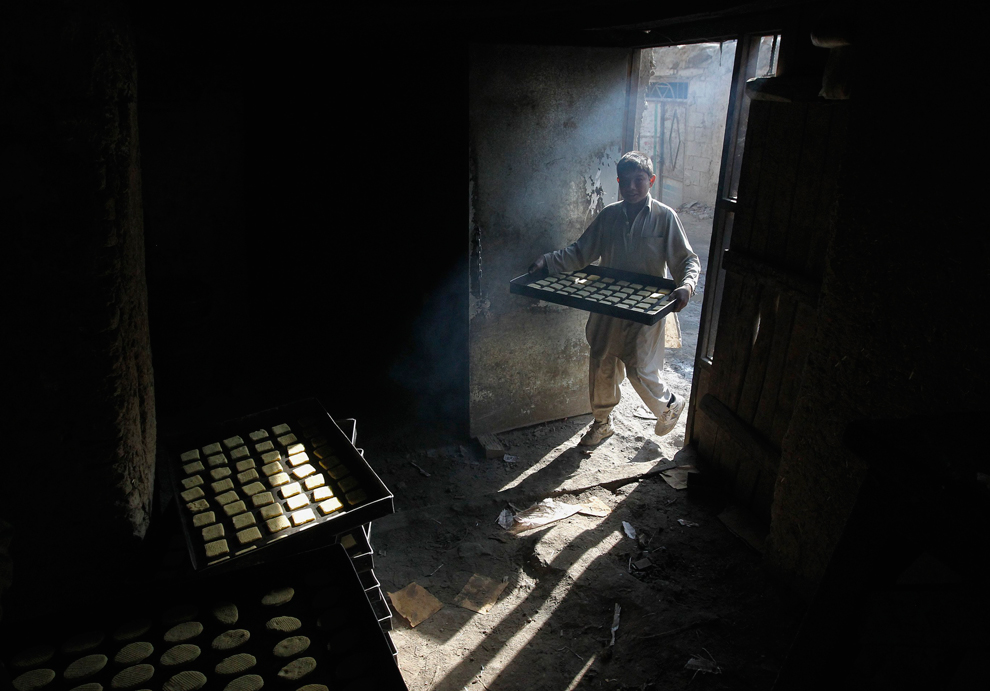
An Afghan boy carries a pan of sweets at a small confectionery factory in Kabul, Nov. 20, 2011. (Omar Sobhani/Reuters)
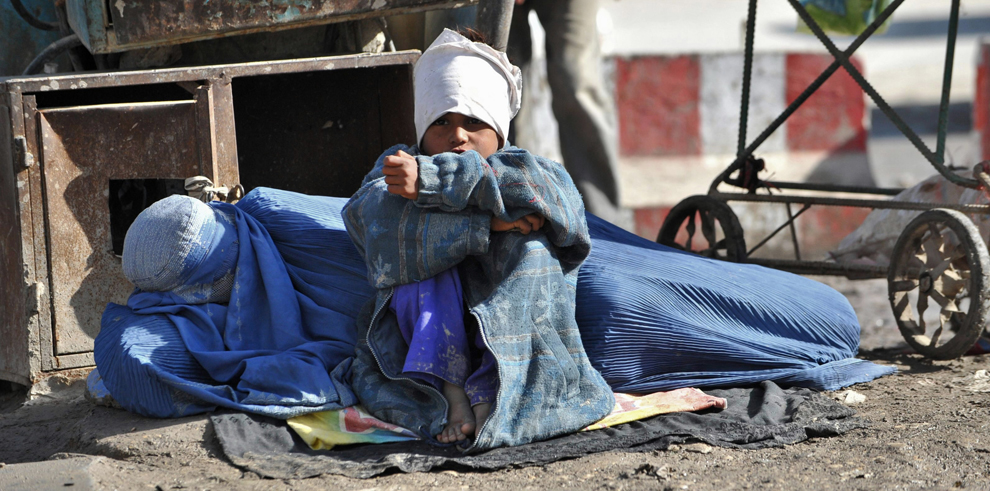
An Afghan women and a young girl beg on a street in Mazar-i Sharif, Nov. 13, 2011. Despite massive injections of foreign aid since the fall of the Taliban in 2001, Afghanistan remains desperately poor. (Qais Usyan/AFP/Getty Images)
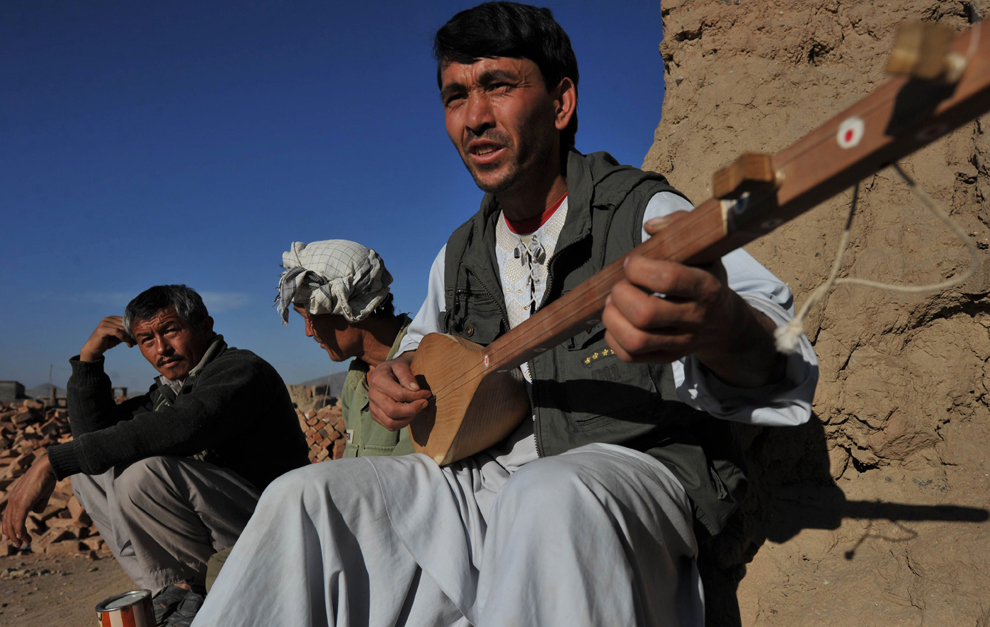
An Afghan musician plays a traditional stringed instrument southwest of Kabul, Nov. 12, 2011. (Massoud Hossaini/AFP/Getty Images)
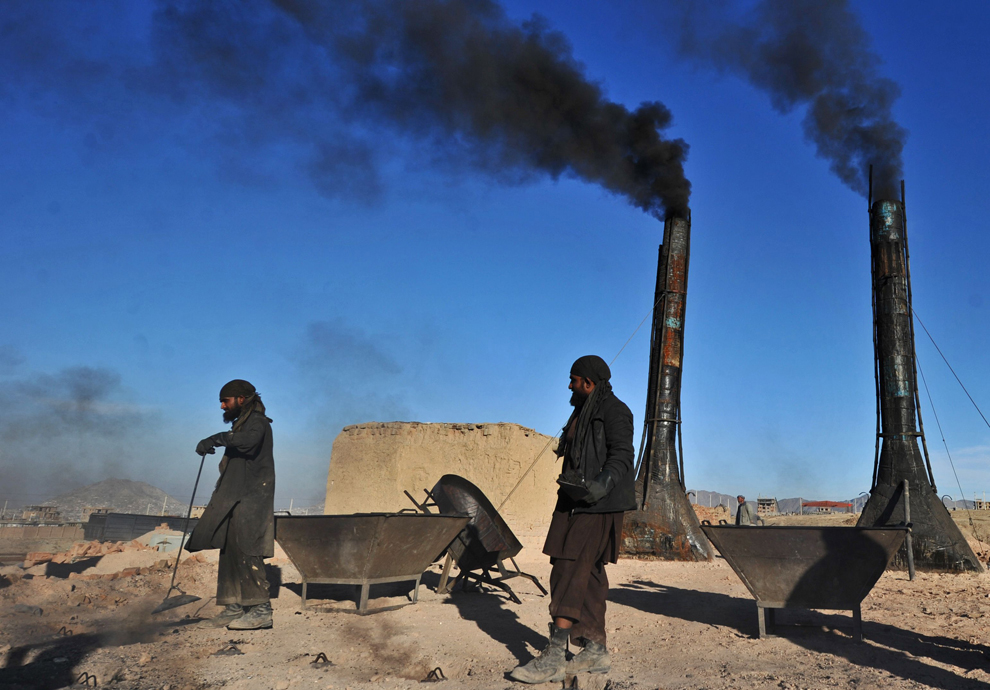
Afghan laborers work at a brick factory southwest of Kabul, Nov. 12, 2011. (Massoud Hossaini/AFP/Getty Images)
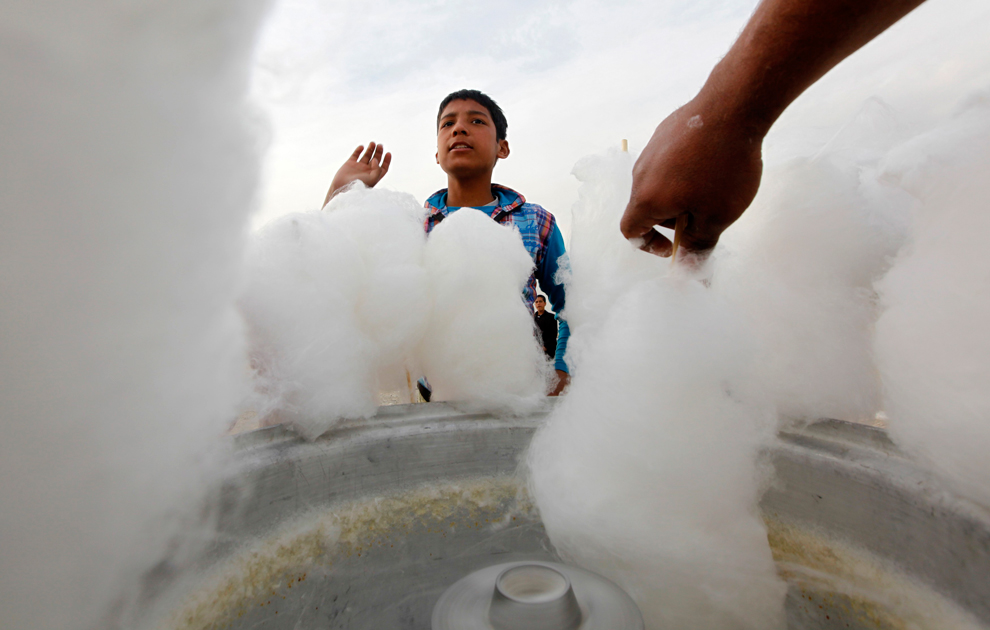
A boy waits for cotton candy on the second day of Eid al-Adha festival in Kabul, Nov. 7, 2011. (Umit Bektas/Reuters)
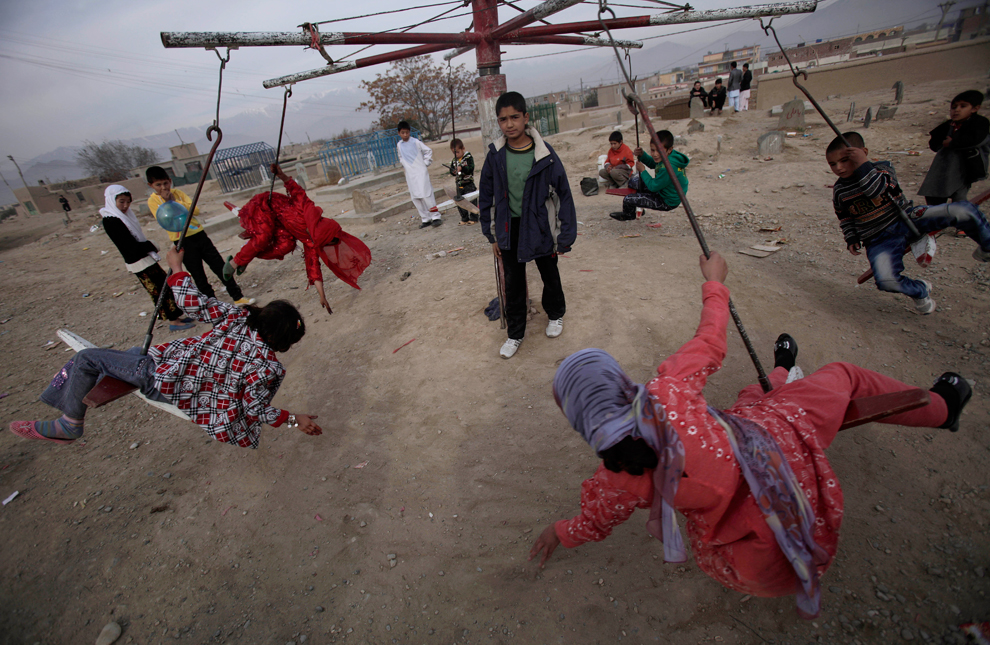
Afghan children enjoy a swing ride set up in a cemetery on the second day of the Eid al-Adha in Kabul, Nov. 7, 2011. The Eid al-Adha is an important religious holiday celebrated by Muslims worldwide to commemorate the willingness of the Prophet Ibrahim to sacrifice his son as an act of obedience to God. (Muhammed Muheisen/Associated Press)
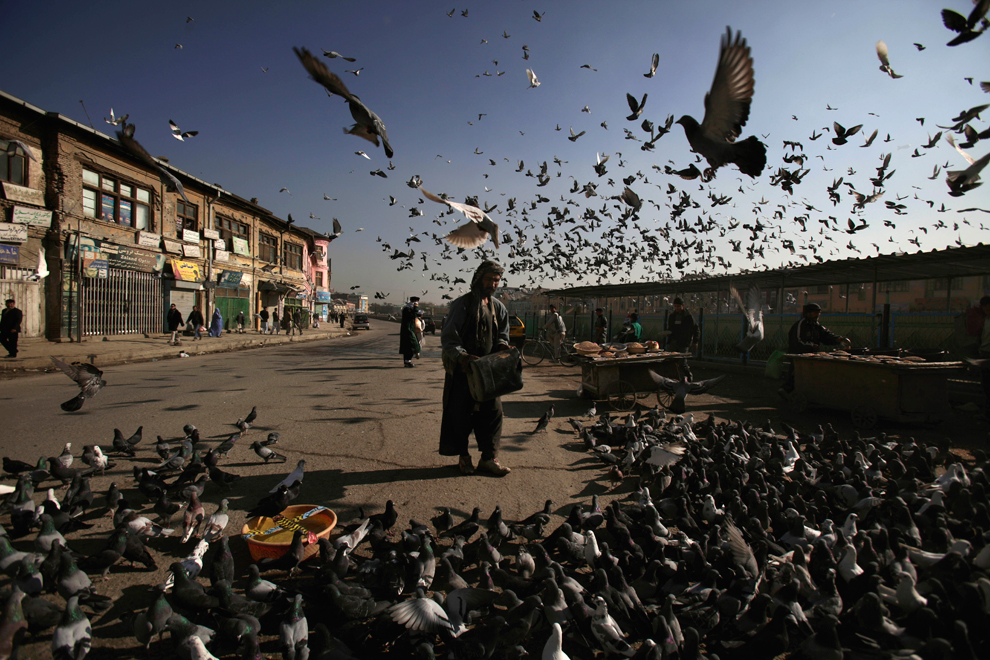
An Afghan man feeds pigeons outside Shah-e-Dushamshera mosque on the first day of Eid-al-Adha prayers, in Kabul, Nov. 6, 2011. (Muhammed Muheisen/Associated Press)
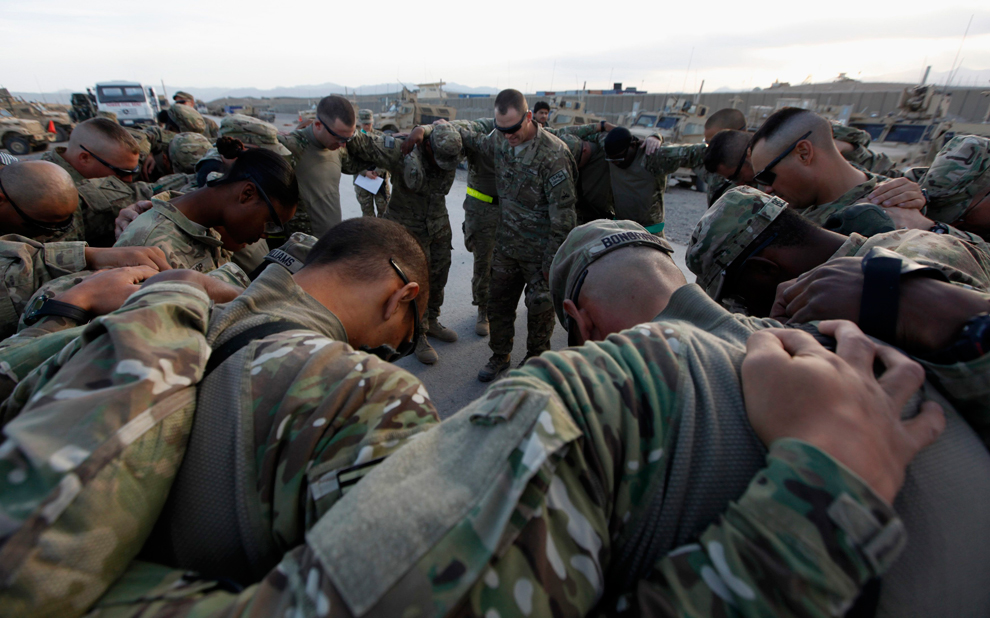
U.S. soldiers pray before going on a mission in Forward Operating Base (FOB) Shank in Logar province, eastern Afghanistan, Nov. 14, 2011. (Umit Bektas/Reuters)

U.S. soldiers wait for the landing of a MEDEVAC helicopter carrying two wounded Afghan National Police Force members who were injured by gun shots in Forward Operating Base (FOB) Shank in Logar province, eastern Afghanistan, Nov. 12, 2011. (Umit Bektas/Reuters)
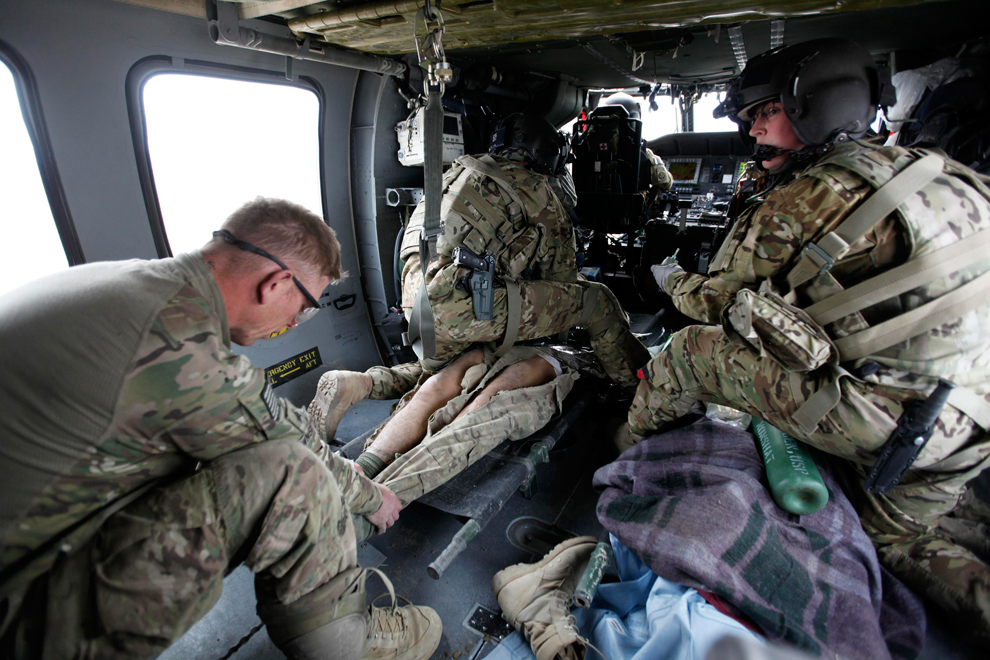
A U.S. Army soldier holds the legs of his wounded comrade, injured by an IED, as he is evacuated along with another injured soldier in Logar province, eastern Afghanistan, Nov. 21, 2011. (Umit Bektas/Reuters)
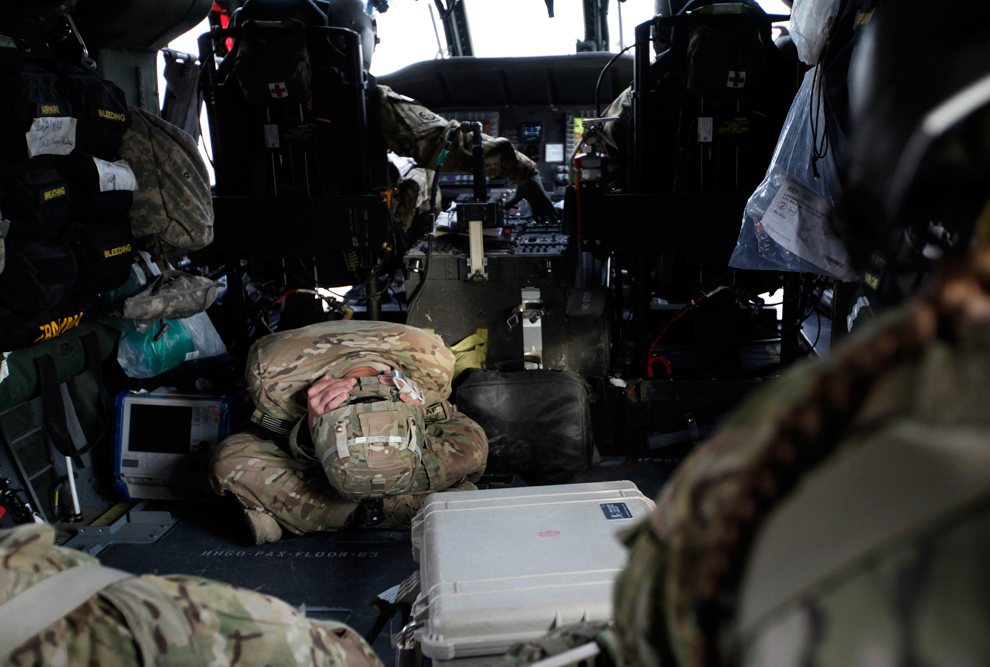
A U.S. Army soldier reacts in pain after being injured by an IED, as he is transported in a MEDEVAC helicopter in Logar province, eastern Afghanistan, Nov. 21, 2011. (Umit Bektas/Reuters)
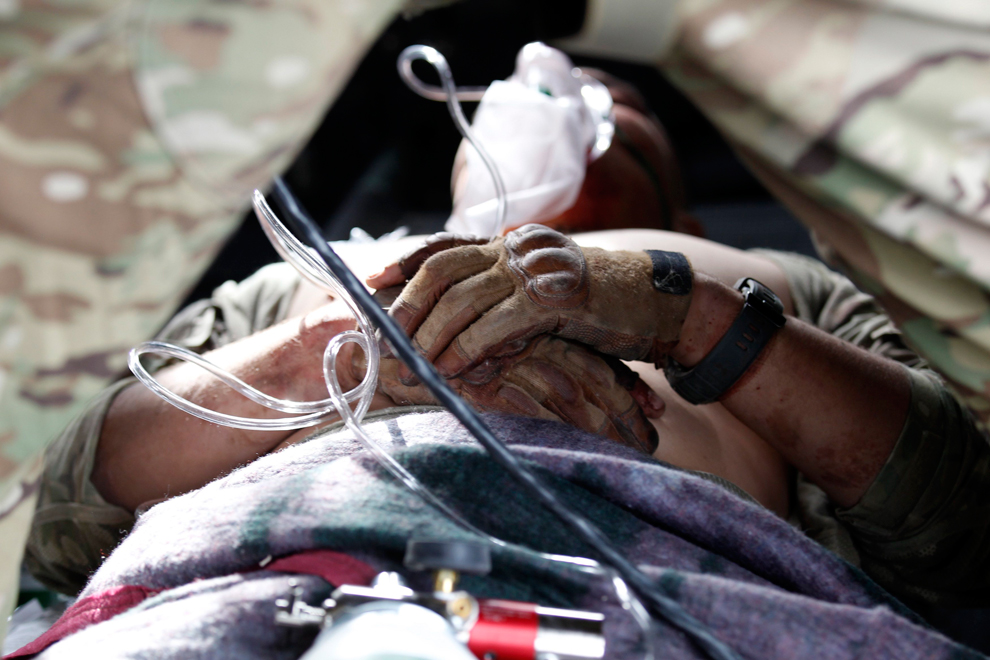
A U.S. Army soldier, injured by an IED, lies in a MEDEVAC helicopter during his transfer for treatment in Logar province, eastern Afghanistan, Nov. 21, 2011. (Umit Bektas/Reuters)
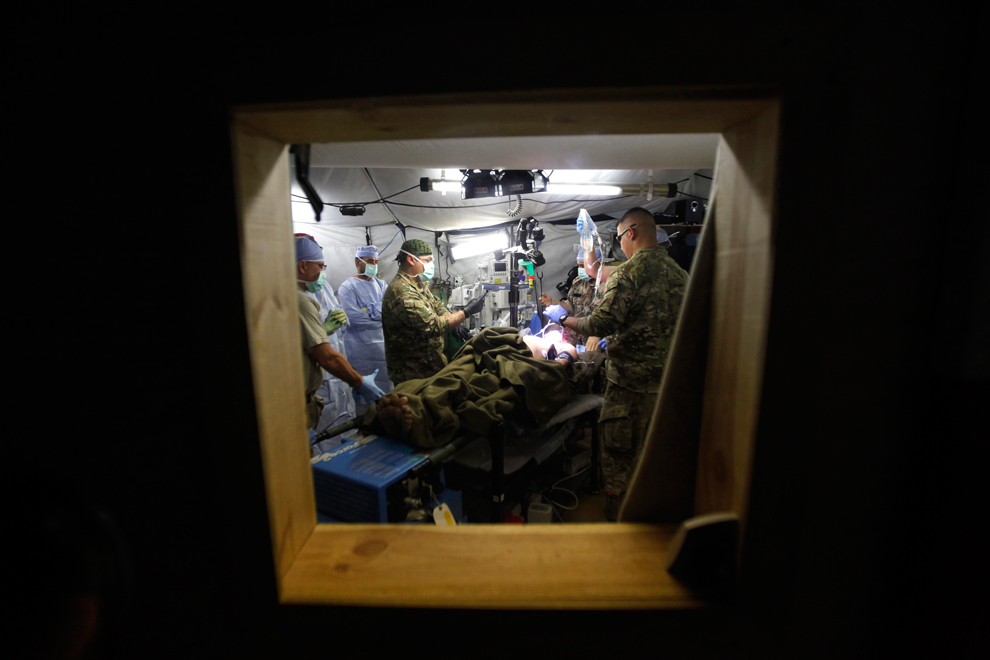
Medical staff treat a wounded Afghan civilian, injured by an IED in Forward Operating Base (FOB) Shank, in Logar province, Nov. 10, 2011.(Umit Bektas/Reuters)
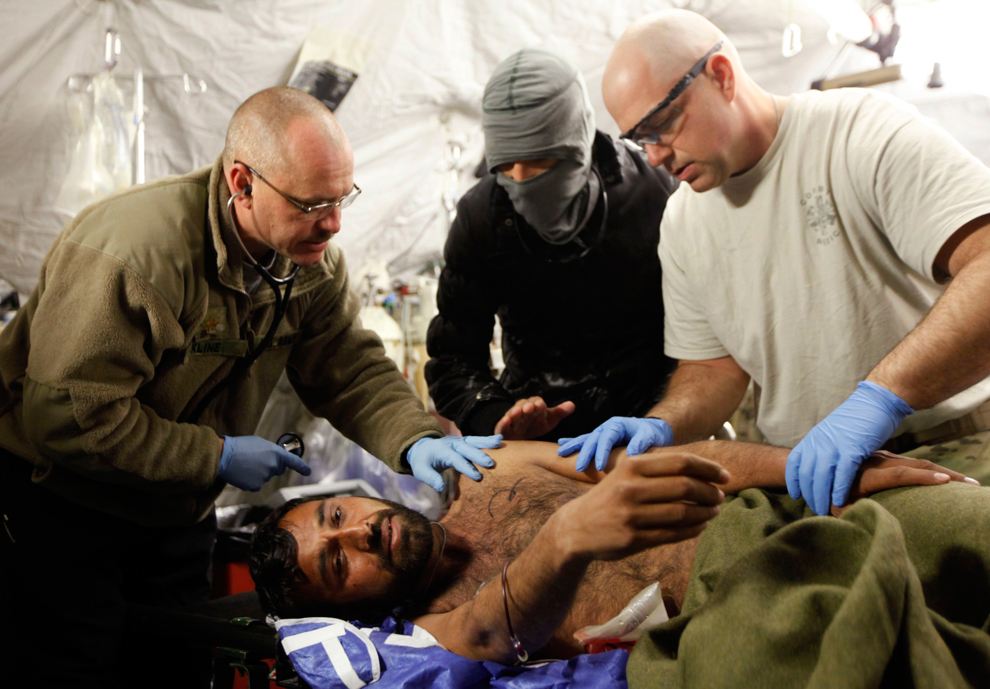
Medical staff treat a wounded Afghan National Police Force member who was injured by gun shots in Forward Operating Base (FOB) Shank in Logar province, Nov. 12, 2011. (Umit Bektas/Reuters)
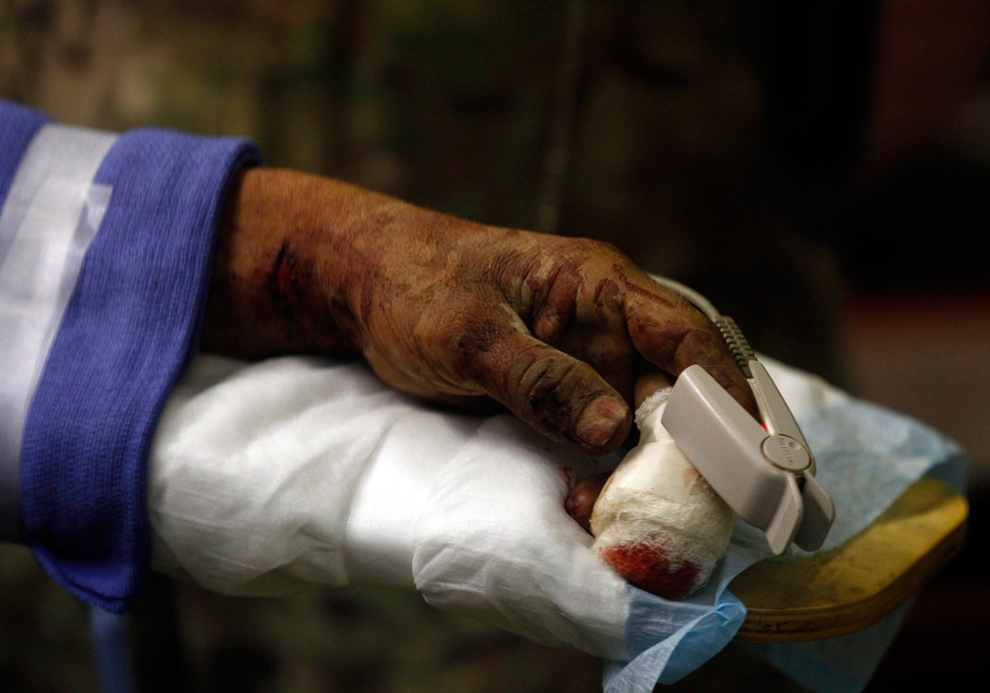
A wounded Afghan civilian, who was injured by an IED, is treated by medical staff of 125 BSB Medical Company, Task Force Mustang at Forward Operating Base (FOB) Shank, Nov. 10, 2011. (Umit Bektas/Reuters)
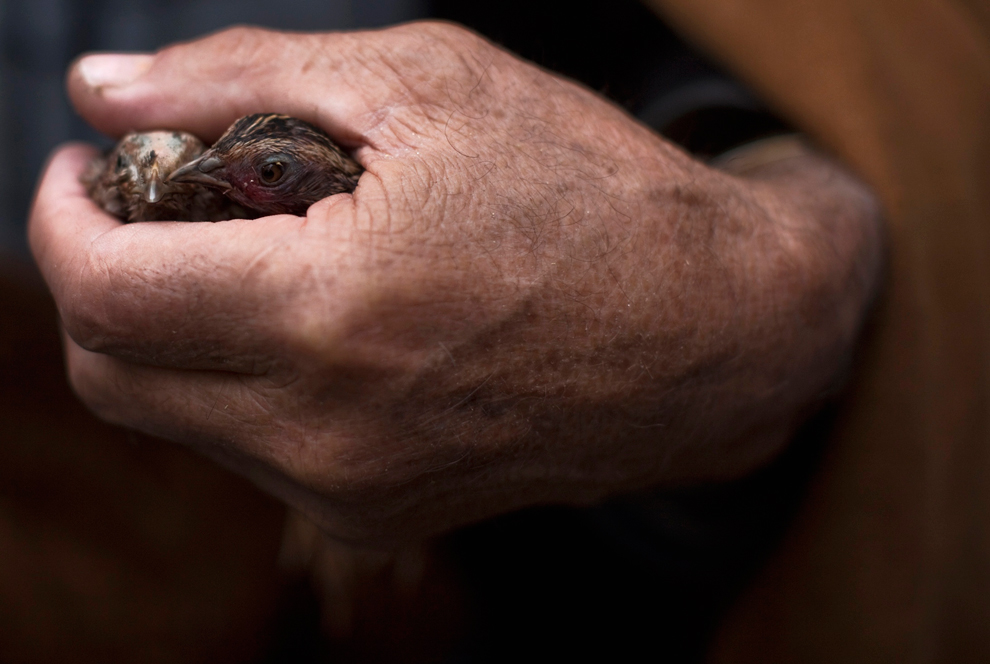
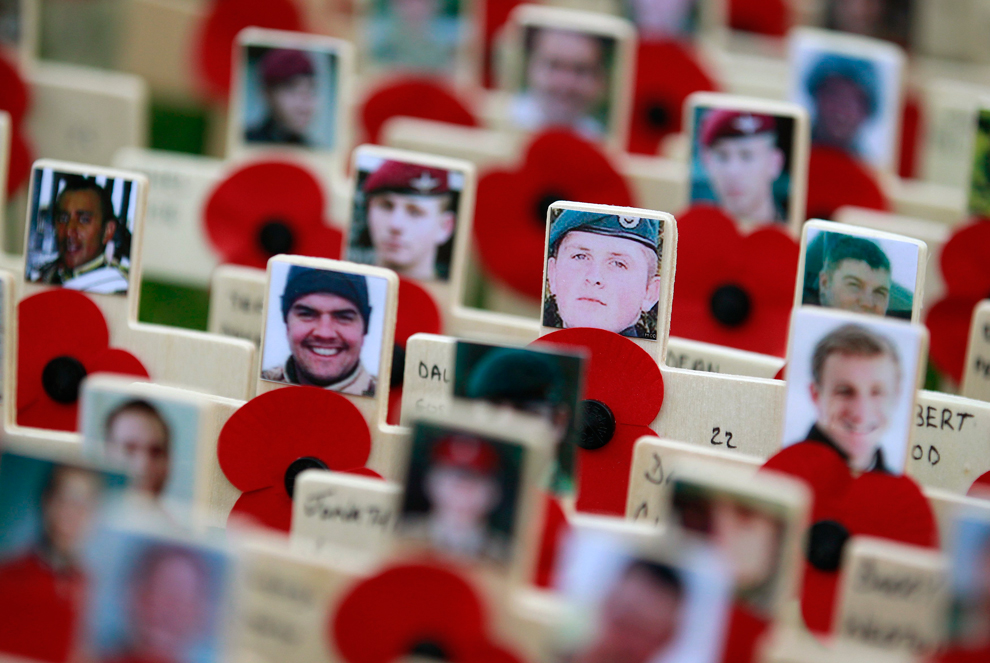
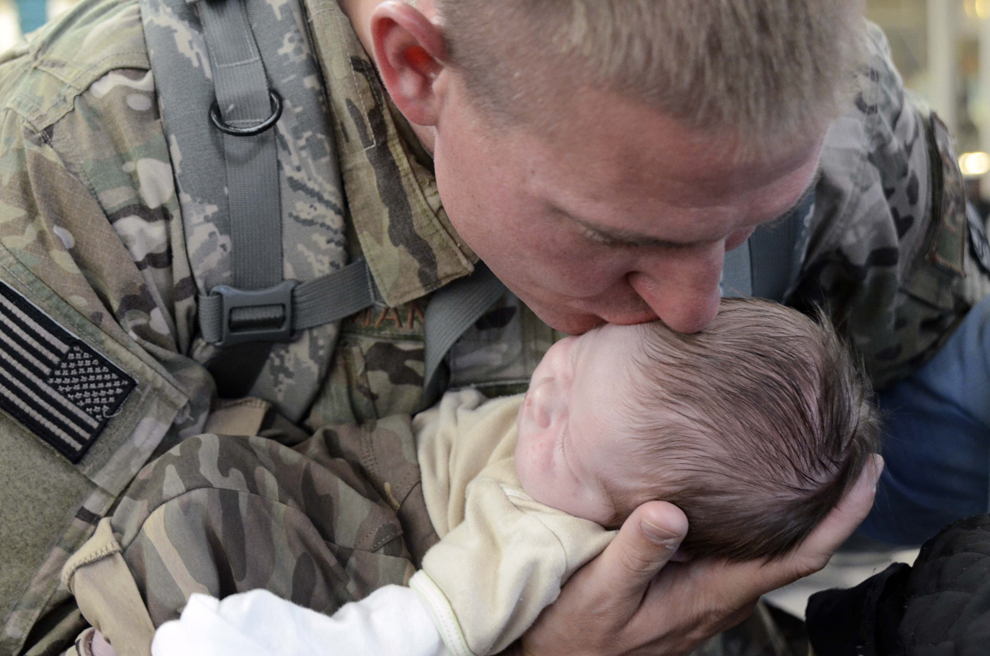
No comments:
Post a Comment